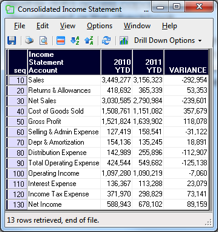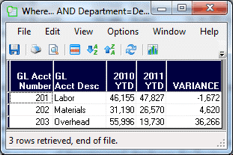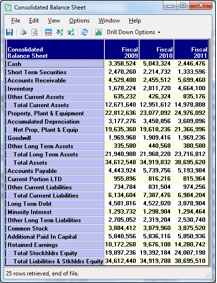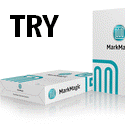Want to streamline your budgeting and financial analysis?
When your general ledger and transaction files are on your IBM i system and your budget data is in Excel, comparing the two can be a real challenge. Does your team have the right equipment to stay in championship form so you can streamline your budgeting and financial analysis?
Every organization needs to round the bases just to report on operations at many different levels. And, at some level, all companies need to track and report on their financial activities. You can hit a single by creating a simple view of your general ledger financial reporting, or you can knock one out of the park with a little work and creativity.
Often, companies spend considerable time and money implementing systems to manage the data that represents their enterprise activity. Many times, they find that the output options for the data from these systems strike out. For example, when your IT department, accounting department, or power users look at your accounts, they often find a fairly flexible number structure. But many financial packages don't have a simple way to categorize account numbers the way you need to view and use them.
You could use a Business Intelligence (BI) tool with flexible data access capabilities that won't overextend the IT department or your checkbook. A tool like SEQUEL lets you group your accounts to the level you need. Its dashboards summarize important business measurements on a PC or Web browser, empowering users to see the data they need when they need it.
SEQUEL Makes It a Brand New Ball Game
So, let's start at the beginning of the game. Companies often use Microsoft Excel to create budgets and other documents for financial analysis. Meanwhile, their general ledger and transaction files are stored on a server, such as an IBM i server. The trick is to combine these two sources to create useful output.
SEQUEL has an easy answer. First, you create a table of data in Microsoft Excel (we call this your grouping-level file; it acts as way to summarize or group your general ledger data). Then, you upload it to the IBM i server using a software package such as IBM i Access for Windows. When you transfer data this way, you move your Excel table data to the IBM i server and save it there. This allows you to maintain your grouping-level information on the IBM i server. (If the data in the table changes in the future, you just rerun the transfer to update the data on the IBM i server.)
Assume that you have a sample Consolidated Income Statement view (shown below) in SEQUEL. Think of this SEQUEL view as your designated hitter.
Figure 1: Here's a sample Consolidated Income Statement view.
A few notes about this view: The first two columns, the sequence number (seq) and the Income Statement Account, are created from the data in the Excel file. In essence, this view groups numerous general ledger account numbers under a single category, such as Sales or Cost of Goods Sold. If you viewed the general ledger data without this grouping information, you'd see numerous account numbers. Here, they are consolidated into a single category and totaled.
Because this is a grouping view (in baseball parlance, a single), you use SEQUEL to drill into any row to see the "data behind the data." For example, imagine that you wanted to see more detail about the Cost of Goods Sold. You just right-click on the record and drill into the underlying department data (you just hit a double).
Figure 2: SEQUEL allows you to drill down into any row.
Need more detail? From there, SEQUEL lets you drill into a department to see the actual general ledger account numbers and amounts that make up that department total (a triple).
Figure 3: Drill down even further.
Here is a sample balance sheet view (with some formatting added to make the data stand out).
Figure 4: Here's the Consolidated Balance Sheet view.
That's it! You're now grouping your transactional data in a format that you can easily use and share. The best part is that all of this happens dynamically without having to build data cubes, warehouses, or data paths. Now, that's a home run!
Use SEQUEL to analyze your financial data. It's easy to use, reliable, and hassle-free. Call us at 800-328-1000 and ask for a free 30?day trial. And check out Help/Systems' other offerings in the MC Showcase Buyer's Guide.

























 More than ever, there is a demand for IT to deliver innovation. Your IBM i has been an essential part of your business operations for years. However, your organization may struggle to maintain the current system and implement new projects. The thousands of customers we've worked with and surveyed state that expectations regarding the digital footprint and vision of the company are not aligned with the current IT environment.
More than ever, there is a demand for IT to deliver innovation. Your IBM i has been an essential part of your business operations for years. However, your organization may struggle to maintain the current system and implement new projects. The thousands of customers we've worked with and surveyed state that expectations regarding the digital footprint and vision of the company are not aligned with the current IT environment. TRY the one package that solves all your document design and printing challenges on all your platforms. Produce bar code labels, electronic forms, ad hoc reports, and RFID tags – without programming! MarkMagic is the only document design and print solution that combines report writing, WYSIWYG label and forms design, and conditional printing in one integrated product. Make sure your data survives when catastrophe hits. Request your trial now! Request Now.
TRY the one package that solves all your document design and printing challenges on all your platforms. Produce bar code labels, electronic forms, ad hoc reports, and RFID tags – without programming! MarkMagic is the only document design and print solution that combines report writing, WYSIWYG label and forms design, and conditional printing in one integrated product. Make sure your data survives when catastrophe hits. Request your trial now! Request Now. Forms of ransomware has been around for over 30 years, and with more and more organizations suffering attacks each year, it continues to endure. What has made ransomware such a durable threat and what is the best way to combat it? In order to prevent ransomware, organizations must first understand how it works.
Forms of ransomware has been around for over 30 years, and with more and more organizations suffering attacks each year, it continues to endure. What has made ransomware such a durable threat and what is the best way to combat it? In order to prevent ransomware, organizations must first understand how it works. Disaster protection is vital to every business. Yet, it often consists of patched together procedures that are prone to error. From automatic backups to data encryption to media management, Robot automates the routine (yet often complex) tasks of iSeries backup and recovery, saving you time and money and making the process safer and more reliable. Automate your backups with the Robot Backup and Recovery Solution. Key features include:
Disaster protection is vital to every business. Yet, it often consists of patched together procedures that are prone to error. From automatic backups to data encryption to media management, Robot automates the routine (yet often complex) tasks of iSeries backup and recovery, saving you time and money and making the process safer and more reliable. Automate your backups with the Robot Backup and Recovery Solution. Key features include: Business users want new applications now. Market and regulatory pressures require faster application updates and delivery into production. Your IBM i developers may be approaching retirement, and you see no sure way to fill their positions with experienced developers. In addition, you may be caught between maintaining your existing applications and the uncertainty of moving to something new.
Business users want new applications now. Market and regulatory pressures require faster application updates and delivery into production. Your IBM i developers may be approaching retirement, and you see no sure way to fill their positions with experienced developers. In addition, you may be caught between maintaining your existing applications and the uncertainty of moving to something new. IT managers hoping to find new IBM i talent are discovering that the pool of experienced RPG programmers and operators or administrators with intimate knowledge of the operating system and the applications that run on it is small. This begs the question: How will you manage the platform that supports such a big part of your business? This guide offers strategies and software suggestions to help you plan IT staffing and resources and smooth the transition after your AS/400 talent retires. Read on to learn:
IT managers hoping to find new IBM i talent are discovering that the pool of experienced RPG programmers and operators or administrators with intimate knowledge of the operating system and the applications that run on it is small. This begs the question: How will you manage the platform that supports such a big part of your business? This guide offers strategies and software suggestions to help you plan IT staffing and resources and smooth the transition after your AS/400 talent retires. Read on to learn:
LATEST COMMENTS
MC Press Online